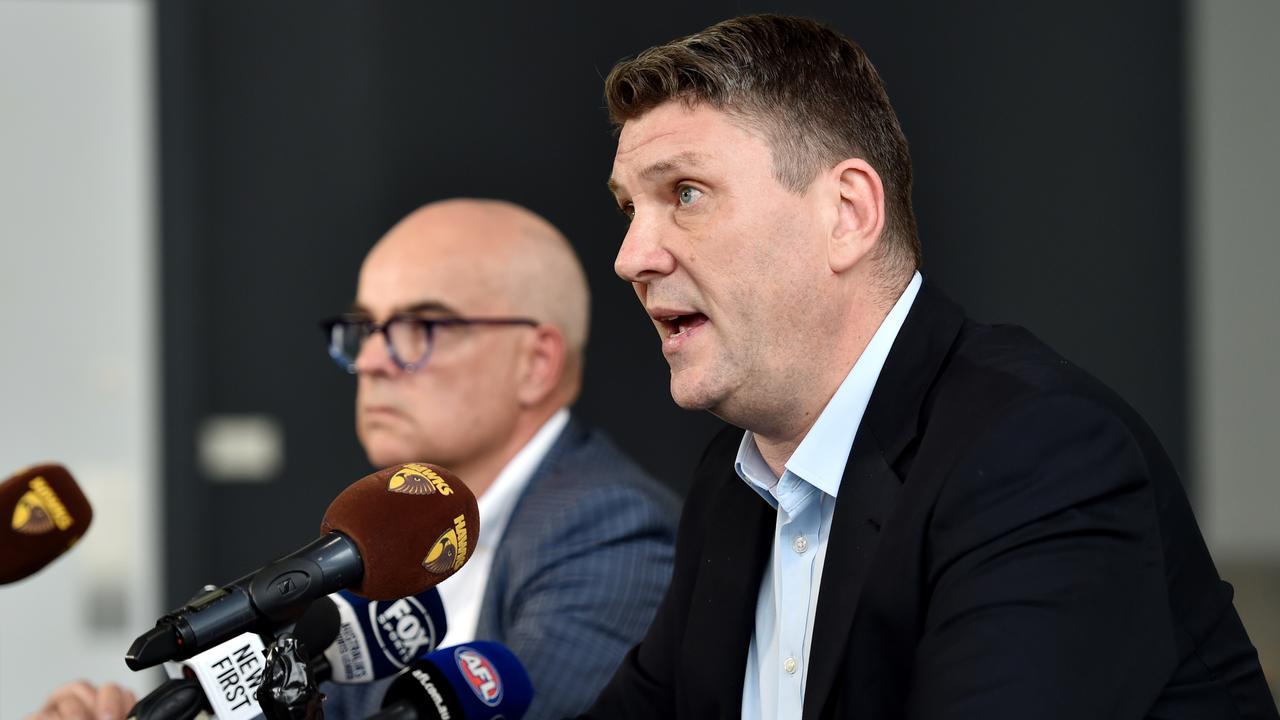New retail data expected to weigh on rates decision
The latest round of retail spending figures is expected to give the RBA board pause for thought in their April meeting.
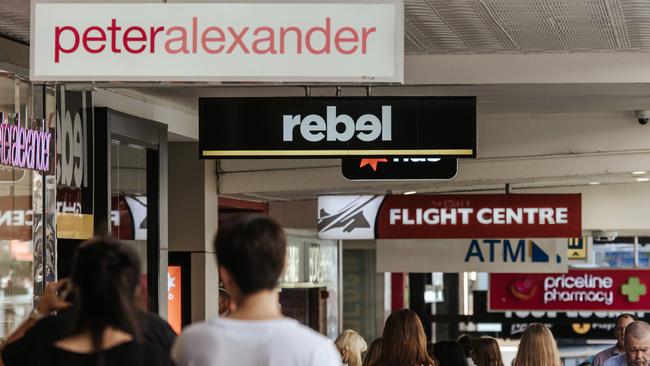
NewsWire
Don't miss out on the headlines from NewsWire. Followed categories will be added to My News.
Retail trade was flat in February, rising just 0.2 per cent according to the latest figures from the Australian Bureau of Statistics (ABS), off the back of a 1.8 per cent rise in January.
The Retail Trade report, released on Tuesday morning, shows an increase of 6.4 per cent when compared to February 2022.
Seasonally adjusted, that means Australians spent $35.14bn in February.
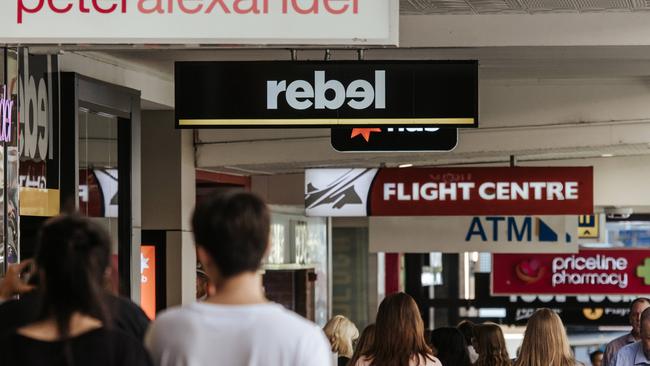
All states except Queensland spent only slightly more month-on-month compared to January, with retail spending in the ACT up one per cent.
Queenslanders were more money-conscious, with spending in the Sunshine State down 0.4 per cent.
The figures are expected to weigh on the minds of the Reserve Bank governors ahead of their monthly meeting next Tuesday, April 4.
Australians are starting down the barrel of an 11th consecutive interest rate rise, as the RBA tries to rein in inflation.
The official cash rate sits at 3.6 per cent after the March RBA board meeting.
They’ll also be keenly observing consumer price index figures, to be released by the ABS on Wednesday, combined with the jobs figures released on March 16.
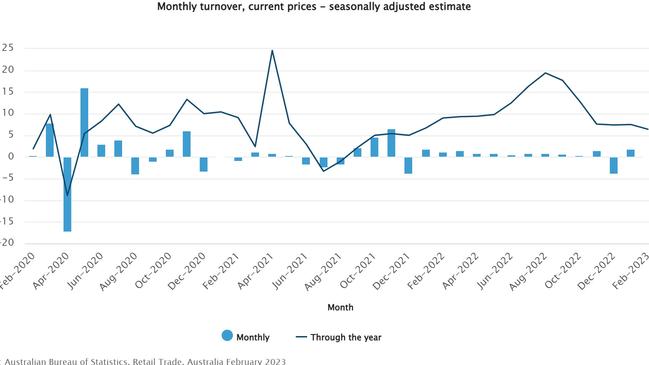
Ben Dorber, ABS head of retail statistics, said retail sales rose modestly in February and appear to have levelled out after a period of increased volatility over November, December, and January.
“On average, retail spending has been flat through the end of 2022 and to begin the new year,” said Mr Dorber.
“Spending in food related industries continued to grow steadily in February, with cafes restaurants and takeaway food services up 0.5 per cent, while food retailing rose 0.2 per cent.
“Non-food industry results were mixed as consumers continue to pull back on discretionary spending in response to the high cost of living pressures.”
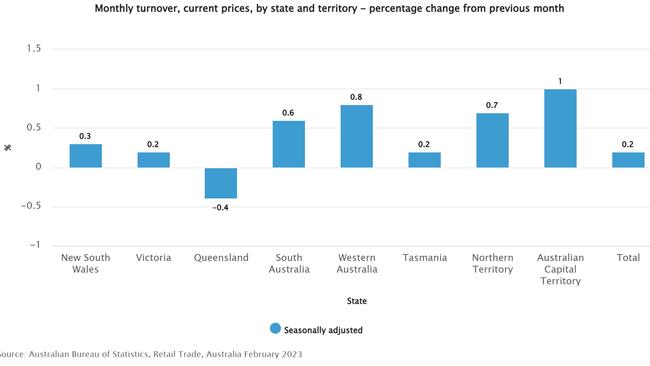
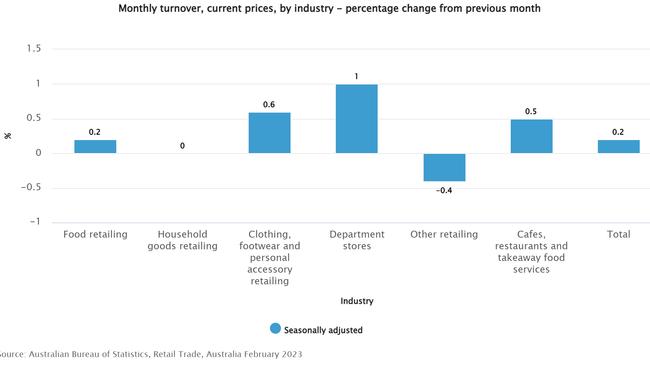
Department store spending led the charge, up one per cent, followed by clothing, footwear, and personal accessory retailing with a 0.6 per cent increase.
Other retailing was the only industry to record a fall this month, down 0.4 per cent, while household goods remained relatively unchanged (0.0 per cent).
Head of Macroeconomic Forecasting for BIS Oxford Economics Sean Langcake said turnover is about what it was in September.
“We have been expecting a slowdown in retail spending for some time due to slowing goods price inflation and the pivot in spending patterns back toward services and away from goods,” said Mr Langcake.
“Moreover, higher interest rates are working to dampen consumer spending.”
More in-depth retail data will be released on Monday.
More Coverage
Originally published as New retail data expected to weigh on rates decision



